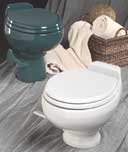Maryland Law Effective July 1,1997
What you need to know about Proper Sewage Disposal
Federal regulations regarding vessels with installed toilets have been in erect since 1980 and have been enforceable by the U.S. Coast Guard. Effective July 1, 1997, a Maryland law (Natural Resources Article §8-741) allows the Natural Resources Police to enforce these requirements. Violators are subject to a fine not to exceed $2,000.
What Does the Law Say?

- If a boat has an installed toilet, it must be equipped with a Coast Guard approved marine sanitation device (MSD).
- There are three types of MSDs. Type I and Type II MSDs are systems that treat the
- sewage to meet certain standards before discharging it into the water. A Type III MSD is a holding tank. Vessels 65 feet and under may have any of the three types. Vessels over 65 feet must have either a Type II or a Type III.
- Type I and Type II MSDs must have a certification label affixed by the manufacturer. Type III MSDs do not need a certification label.
- If a vessel has a holding tank, all pathways for the overboard discharge of raw sewage must be blocked or secured by disconnecting or physically blocking those onboard sewage lines or hull fittings.
- A “Y” valve (which by-passes a holding tank) is allowed, however, it must be secured to prevent the overboard discharge of raw sewage. Acceptable methods of securing the “Y” valve include the use of a nonreusable wire tie, a padlock, or by removing the valve
- For any vessel offered as a noncaptained charter, the leasing entity must ensure that the vessel is in compliance with this law and include in the lease agreement, signed by the
leasing party, a paragraph outlining the operator’s responsibilities under this law.
Frequently Asked Questions:
Q. What is a no discharge zone (NDZ) and does this law establish any NDZs in the Maryland portion of the Chesapeake Bay?
A. A no discharge zone (NDZ) is an area of water where no boat sewage, even if it is treated by a certified Type I or Type II MSD, may be discharged.This law does not establish any NDZs in the Maryland portion of the Bay. NDZs are, however, an option that may be considered in the future. It is important to remember that it is illegal to discharge raw sewage from a vessel within U.S. territorial waters (including the entire Chesapeake Bay).
Q. Is a recreational vessel required to have a toilet?
A. No.
Q. Does this law apply to vessels with portable toilets?
A. The law does not apply to vessels with portable toilets, however, the waste contained in portable toilets must be brought ashore for proper disposal.
Q. What type of MSD is recommended for vessels with installed toilets?
A. It is highly recommended that vessels with installed toilets be equipped with holding tanks (Type III MSDs). Holding tanks (and portable toilets) can be emptied at conveniently located marine sewage pumpout facilities.
Q. Does the law apply to gray water (waste from sinks, showers, etc.)?
A. No. The law only applies to human waste (black water).
Q. Is there a “grandfather clause” that exempts older boats from these requirements?
A. No. All boats with installed toilets must be in compliance.
Q. Is a macerator considered to be an approved Type I or Type II treatment system?
A. No. A macerator only grinds sewage – it does not treat it. Any system that allows for the direct overboard discharge of raw (untreated) sewage is illegal.
Q. My boat has some type of treat & discharge system but I’m not sure it’s legal. How
can I tell?
A. All approved Type I and Type II MSDs have a certification label affixed by
the manufacturer. If you can’t find a label, you have an illegal system.
Holding tanks (Type III MSDs) are not required to have a label.
OYA T&T Recommends:

Our recommendation is the
Vacuflush head system for a odor-free boat.
Water efficient – uses as little as one pint (.5 L) of fresh water per flush.
Anti-splash rim keeps water in bowl while underway.
Full-size wood seat offers homelike comfort and lasting strength.
Available in five colors to complement any décor.
Diverse height and discharge options accommodate all floor plans.

 Our recommendation is the Vacuflush head system for a odor-free boat.
Water efficient – uses as little as one pint (.5 L) of fresh water per flush.
Anti-splash rim keeps water in bowl while underway.
Full-size wood seat offers homelike comfort and lasting strength.
Available in five colors to complement any décor.
Diverse height and discharge options accommodate all floor plans.
Our recommendation is the Vacuflush head system for a odor-free boat.
Water efficient – uses as little as one pint (.5 L) of fresh water per flush.
Anti-splash rim keeps water in bowl while underway.
Full-size wood seat offers homelike comfort and lasting strength.
Available in five colors to complement any décor.
Diverse height and discharge options accommodate all floor plans. 
